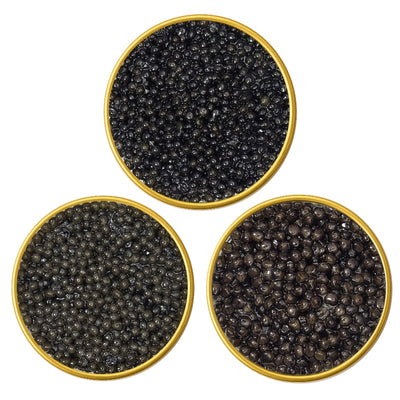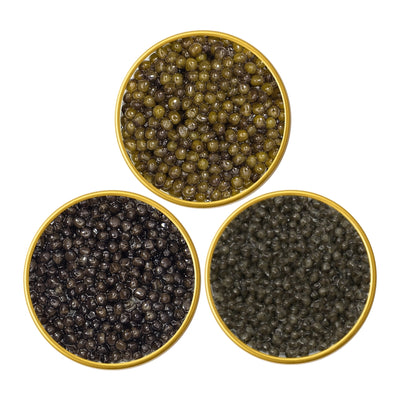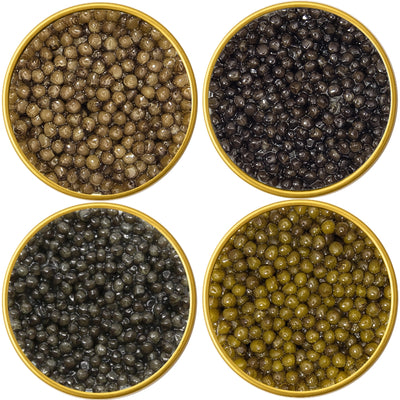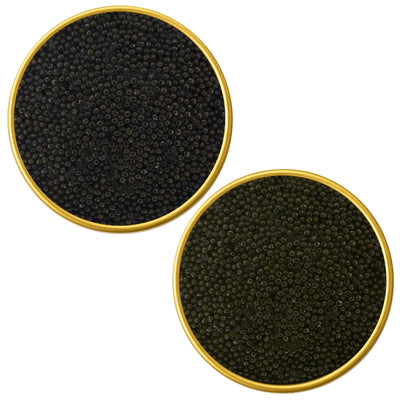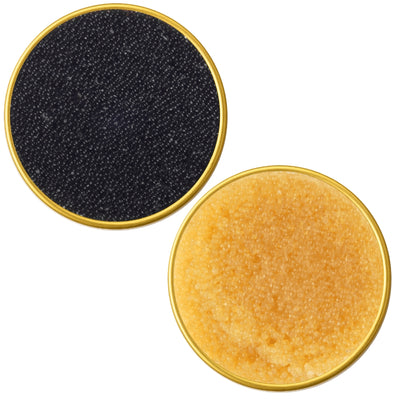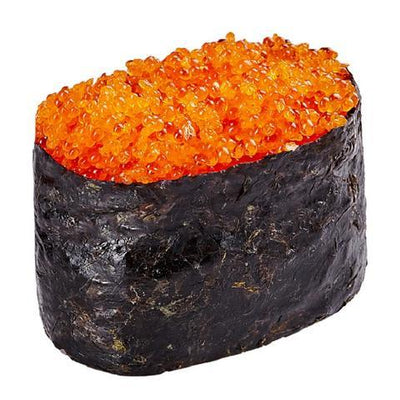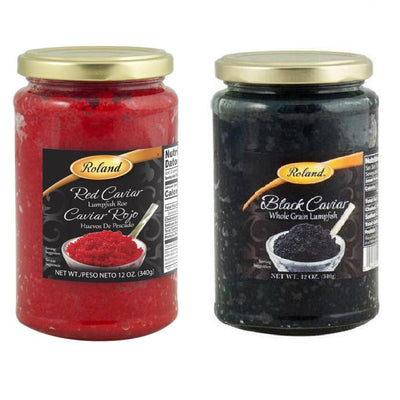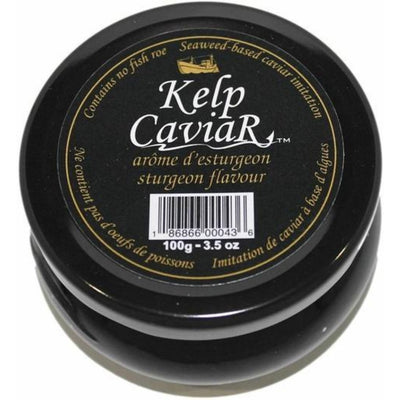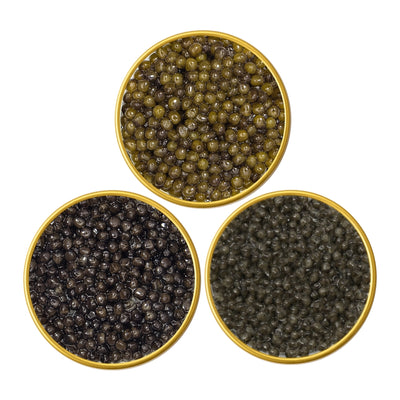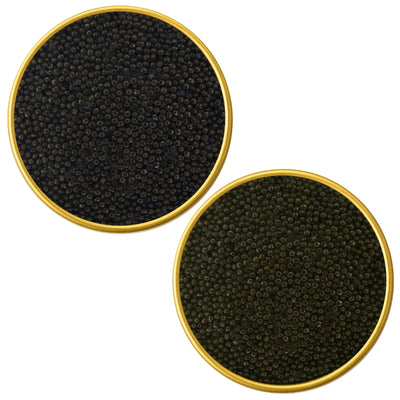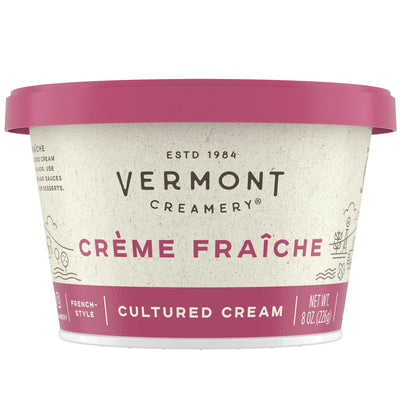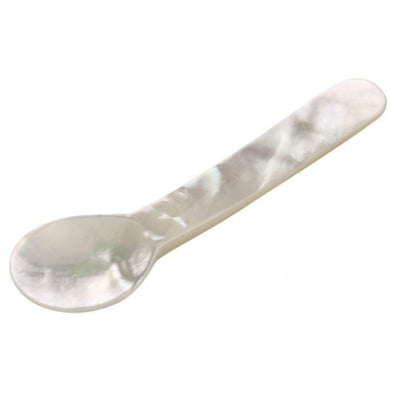- 1.8 oz. (50g) Gold Tin - $35.00
- 2 oz. (57g) Glass Jar - $38.00
- 4.5 oz. (125g) Gold Tin - $85.00
- 9 oz. (250g) Gold Tin - $168.00
- 1.1lb (500g) Gold Tin - $330.00
- 2.2 lb. (1kg) Blue Tin - $660.00
American Paddlefish Wild-Caught Black Caviar Caspian Style Delicacy
PRODUCT DETAILS
American Paddlefish Caviar is harvested from wild paddlefish, a unique freshwater species native to the rivers and reservoirs of the United States. Known for their elongated, paddle-shaped snout—earning them the nickname “spoonbills”—these ancient fish produce roe that closely resembles the prized Sevruga caviar of the Caspian Sea.
The pearls range in color from light to dark steel gray, offering a delicate pop and smooth mouthfeel. With a flavor profile that is both refined and approachable, American Paddlefish Caviar delivers a clean, subtle brininess balanced with gentle nutty undertones. Because it is wild-caught, the taste may vary slightly between batches, influenced by the fish’s natural diet and seasonal changes in the rivers. Its medium-sized grains make it a versatile choice, perfect for enjoying on its own or as part of elegant appetizers.
Prepared in the traditional Malossol style, meaning “little salt,” this caviar preserves the roe’s natural character while enhancing its fresh, nuanced flavor. It is a popular choice for those seeking a more affordable alternative to premium sturgeon caviar without sacrificing quality or sophistication.
Q&A – American Paddlefish Caviar
Where does American Paddlefish Caviar come from?
It is wild-caught in U.S. rivers and reservoirs, primarily in the Mississippi River basin, from paddlefish known for their distinctive spoon-shaped snout.
What does American Paddlefish Caviar taste like?
It has a mild, clean flavor with a gentle brininess and subtle nutty notes. As a wild product, the taste can vary slightly depending on the fish’s diet and seasonal river conditions.
How should it be served?
Serve well-chilled with a non-metallic spoon. Enjoy on blinis or toast points with crème fraîche, or savor on its own with champagne or vodka.
Why is it called "Caspian Style"?
Its taste, texture, and appearance are reminiscent of Sevruga caviar from the Caspian Sea, making it a desirable and more affordable alternative.

